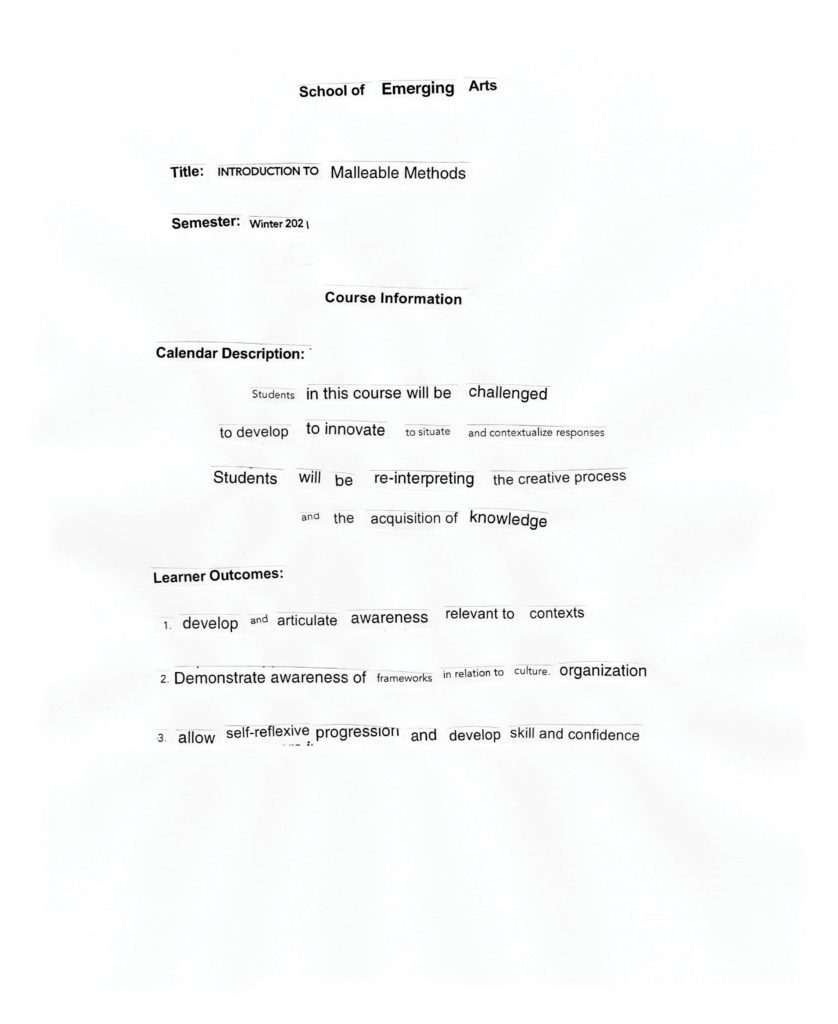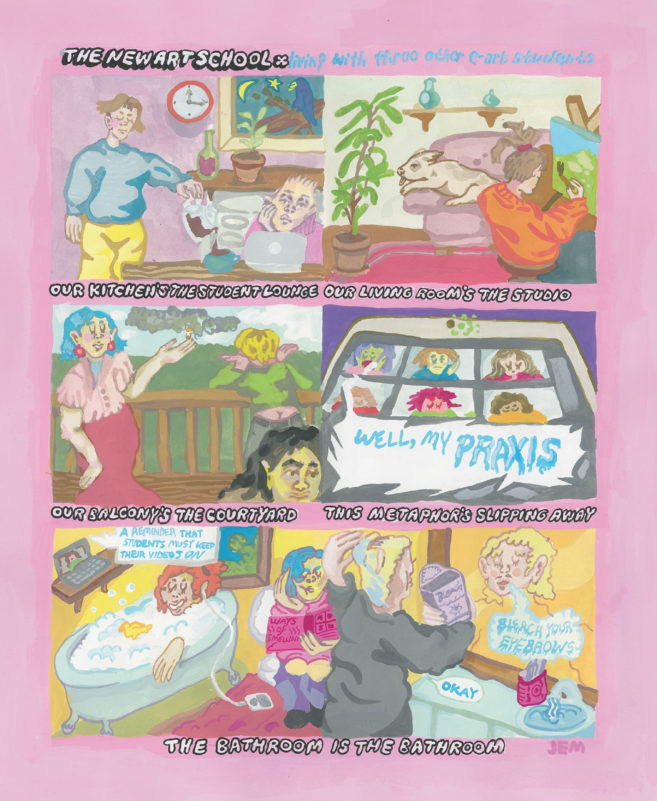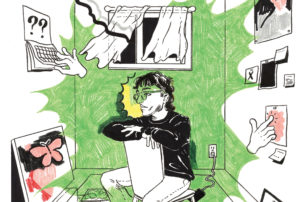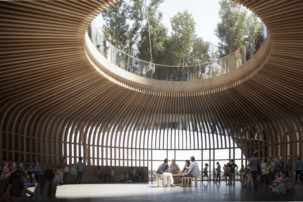An art education is not just for art school. It can come by way of various, even unexpected, means and sources. Galleries and museums, for example, have used this moment of reduced access to expand free online offerings in unprecedented ways.
SAW Gallery’s Free School (based in Ottawa, but recently held online for the first time) offers practical lessons in artmaking by artists such as Shary Boyle, Barry Ace and Joi T. Arcand. The Montreal Museum of Fine Arts has presented informative videos about how key professionals—conservation specialists, art therapists and curators, among them—function within the institution. And, more than ever, international events, symposia and artist talks are open to anyone with internet access.
The experimental online program Dark Study, from the US but available to international participants, centres on art in the absence of the studio and traditional university settings. Founded by Caitlin Cherry, Nora Khan and Nicole Maloof in May 2020, Dark Study aims to remove gatekeepers of higher education to better serve those who are underrepresented. Instead of a typical application process, applicants to the free, year-long virtual program were asked to express how their relationship to society informs the art they make, and then could submit their responses via text, video or audio. A roster of advisors includes notable artists, curators and writers, such as Sondra Perry, Jesse Darling and David Xu Borgonjon.
Sara-Jeanne Bourget and Mark Johnsen, both artists and sessional instructors at Emily Carr University of Art and Design, launched Patio Press last spring from their Vancouver apartment. They invited peers to be virtual residents—each resident received a printing plate to prepare, then Bourget and Johnsen printed the works and returned the finished editions (and plate) at no cost. Partnering with ECUAD, the pair launched the Patio Press x Emily Carr Fellowship, which gives each student awardee the opportunity to produce an edition that is then showcased online. A print from each edition will also be added to a special collection at the school’s library. “That was important for Mark and me to give them that, to make sure they can have a couple things on their CV right now,” Bourget says.
Bourget and Johnsen have built projects of expanded connection and collaboration into their virtual courses at ECUAD too. In Bourget’s Drawing: Narrative Images class, students are asked to maintain a term-long correspondence with a partner, such as through voice recording or Instagram. Similarly, Johnsen initiated a postcard exchange in his DIY Printmaking Techniques class so students can experience the physicality of each other’s works.
“The students have been making high-quality work at home,” explains Johnsen, “but I miss, and I know they miss, that communal space where things happen unplanned. I’m really optimistic that whenever we do get back into that space, the level of compassion, understanding and patience that we’ve developed with each other stays present.”
For ECUAD student Erick Jantzen, refocusing on localized artmaking has radically shifted how he views his practice during the pandemic. “I think a lot of students struggle with online engagement,” he says, “What’s been really rewarding for me has been going on walks in the neighbourhood, talking to people in my community.” As Jantzen has had to reimagine printmaking using kitchen materials, stovetop alchemy, and handmade inks, dyes and papers, these specific observations about his surroundings have become a key part of his process.
To Jantzen, saying art schools have gone “online” is a failure of language: students still make work in their bedrooms, on their balconies and in other spaces of lived experience. This shift in perspective has huge potential. “What place-based making offers is that people are suddenly creating from outside the art school bubble,” he says. “You just have to go outside and see the smoke [from forest fires], or go to the garden and pick your own vegetables and you’re back in a very specific creative context.”
This article is adapted from “School Guide 2021: Art education in a time of unprecedented change,” a special section of Canadian Art’s Winter 2021 print issue, “Tangents.” Download a PDF of the complete guide now, or visit our School Guide page online, to read more

 Luigi Pulido, Winter 2021 Syllabus, 2020. Pulido studies at the Alberta University of the Arts, with a focus on sculpture. He describes this work as follows: “In response to COVID-19, art institutions have migrated to online learning environments to best deliver instruction. But through this, the paradigm of education and the role of institutions has shifted massively. Winter 2021 Syllabus is a deconstruction of language taken directly from course syllabi in order to reconstruct and recontextualize language to create a new syllabus.
Luigi Pulido, Winter 2021 Syllabus, 2020. Pulido studies at the Alberta University of the Arts, with a focus on sculpture. He describes this work as follows: “In response to COVID-19, art institutions have migrated to online learning environments to best deliver instruction. But through this, the paradigm of education and the role of institutions has shifted massively. Winter 2021 Syllabus is a deconstruction of language taken directly from course syllabi in order to reconstruct and recontextualize language to create a new syllabus.






